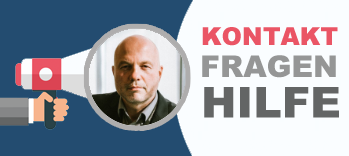Finally plus again with the SMEs - but 8 out of 10 entrepreneurs see black: the big paradox in German middle class
Xpert pre-release
Language selection 📢
Published on: June 25, 2025 / update from: June 25, 2025 - Author: Konrad Wolfenstein

Finally plus again with the SMEs - but 8 out of 10 entrepreneurs see black: the big paradox in German middle class - Image: Xpert.digital
Germany's engine stuttered: Despite the sales plus, bureaucracy and shortage of skilled workers threaten to stop the relaxation
The turn after 2 years of crisis? What the new numbers for German middle class really mean
The German economy has been experiencing a difficult phase for several years. After two years of almost continuous declines, however, there are again signs of stabilization that show hope for a sustainable economic turnaround in German middle class. The current developments reveal a complex picture of the first positive signals and persistent structural challenges that continue to significantly burden the backbone of the German economy.
First bright spots in sales figures
The latest data from the DATEV Mittelstands index show a positive development for the first time in May 2025. With an increase in sales of 2.8 percent compared to the very weak last year, the small and medium -sized companies in Germany have achieved an important psychological turning point. This development is particularly noteworthy, since the middle class had previously recorded shrinking sales for two years.
The positive development is not evenly shown across all company sizes. Medium -sized companies were able to record the strongest recovery with a increase in sales of 6.4 percent, while small companies achieved solid growth of 3.9 percent. Small companies, on the other hand, remain in a difficult location with minimal growth of only 0.1 percent. This discrepancy illustrates that the economic recovery has not yet reached all areas of medium -sized businesses and that the smallest companies in particular continue to fight with significant problems.
Sectoral differences shape the picture
The recovery is largely supported by certain economic areas. Trade, construction and large parts of the service sector already show significant improvements and bear the positive development in almost all federal states. In the processing industry, there is also a stabilization after production in March 2025 increased by a considerable 3.0 percent compared to the previous month. It is particularly encouraging that the first quarter of 2025 had the strongest quarterly growth in three years with growth of 1.4 percent.
Nevertheless, there are still problem children in the German economic landscape. In May 2025, the hospitality industry recorded a new decline of 7.0 percent compared to the previous year and thus remains the most problematic segment of German SMEs. This persistent weakness shows that recovery is not yet wide enough to capture all areas of the economy.
Regional diversity of development
The regional view reveals significant differences in the economic development of medium -sized companies. While some areas show strong sales growth in small and medium -sized companies, others continue to fight with structural challenges. Countries such as Straubing, Frankfurt an der Oder, Bremerhaven and the Emsland developed particularly outstandingly. In Straubing, sales in the middle class increased by an impressive 10.6 percent, in Frankfurt an der Oder 7.1 percent.
These regional developments are often influenced by resettlements or expansion of large companies. Mittelstand in Straubing benefited from the settlement of the service provider Amazon, which shows how important targeted investments for regional economic development are. On the other hand, there are counties such as Emden, where the small and medium -sized companies had to accept a sales minus of 14.1 percent, which is due, among other things, to uncertainties related to the Volkswagenwerk.
Persistent structural challenges
Despite the first positive signals, the German middle class continues to be faced with considerable structural problems that threaten its competitiveness and future viability. A current special survey on the KfW Mittelstandspanel clearly shows where small and medium-sized companies see the central challenges for 2025.
Bureaucrato load as a gathering of growth
The bureaucracy stress is at the top of the list of problems that burden the German middle class. Companies complain about increasing regulatory density and complex administrative procedures that bind valuable resources. This has a particularly serious effect in times of a shortage of skilled workers, since 69 percent of HR employees in small and medium-sized companies are almost only employed by administrative work. This development prevents companies from being able to concentrate on strategically important tasks such as digitization, personnel development and recruiting.
The over -regulation is particularly evident on construction sites, where, according to entrepreneurs, more inspectors are now active than craftsmen. This excessive control density not only inhibits efficiency, but also leads to considerable delays in construction projects and thus to additional costs for companies.
A shortage of skilled workers further exacerbates
The shortage of skilled workers remains one of the most pressing challenges for German middle class. 58 percent of small and medium -sized companies are already expecting difficulties in filling in the next five years. The consequences are drastic: less order acceptance, reduction of production or opening times or even the closure of locations. It is particularly alarming that 62 percent of the medium -sized companies surveyed fear that in 2025 you cannot fill free training positions.
The demographic change increases the middle class and increases the already tense situation on the labor market. At the same time, the continued decline in employment means that small companies have a significant decline in the number of employees. This vicious circle of a lack of personnel and declining employment threatens the long -term stability of many medium -sized companies.
Companies burden costs increases
In addition to higher energy costs, companies primarily burden the recently increased wages and social security contributions. This already has 33 percent of the total costs with an average sales return of only 7 percent. This development shows how little scope many medium -sized companies have to cope with further cost increases.
It is interesting, however, that the German medium-sized company has better cope with the violent price deflections on the energy markets through the Ukraine War than initially feared. According to a KfW study, 72 percent of medium-sized companies reduced their energy consumption through energy-conscious behavior. This adaptability shows the resilience of German middle class, even if the energy costs continue to be significant load.
Our recommendation: 🌍 Limitless reach 🔗 Networked 🌐 Multilingual 💪 Strong sales: 💡 Authentic with strategy 🚀 Innovation meets 🧠 Intuition
At a time when a company's digital presence determines its success, the challenge is how to make this presence authentic, individual and far-reaching. Xpert.Digital offers an innovative solution that positions itself as an intersection between an industry hub, a blog and a brand ambassador. It combines the advantages of communication and sales channels in a single platform and enables publication in 18 different languages. The cooperation with partner portals and the possibility of publishing articles on Google News and a press distribution list with around 8,000 journalists and readers maximize the reach and visibility of the content. This represents an essential factor in external sales & marketing (SMarketing).
More about it here:
German middle class between hope and challenge: why 2025 could be the turning year
Digitization and sustainability as a future task
The German middle class faces the huge task of digitally transforming yourself at the same time and operating more sustainably. A survey by the Federal Association of Materials Management, Purchasing and Logistics shows that 60 percent of small and medium -sized companies have already digitized their procurement processes and another 30 percent are planning this for the near future. Nevertheless, 71 percent of the needed digitization needs in supplier management see, which indicates considerable potential for increasing efficiency.
The challenge is that many small and medium -sized companies have so far not reached a high degree of digitization. In addition, digitization and sustainability have so far hardly been thought together. The reasons for this are missing funds or a lack of knowledge. In the medium term, these deficits could prove to be a significant obstacle to competition, since both the digital and sustainable transformation are decisive for the future viability of the companies.
Financing situation remains relaxed
A positive aspect in the current situation of German middle class is the relaxed financing situation. Contrary to many fears, current studies show that 84 percent of the medium -sized companies surveyed had no problems with capital procurement. This underpins that a lack of capital is currently not an obstacle to growth.
It is also noteworthy that more and more medium -sized companies do without the financing of their investments in bank loans. The proportion of investing medium -sized companies who have used bank loans has almost halved in the past 20 years. This development is less due to restrictions in the loan offer than a changed attitude to the topic of debt and high equity equipment for many companies.
International competitiveness under pressure
Despite its traditional strengths, the German middle class is increasingly under pressure in international competition. High energy costs, dense regulation and comparatively high taxes and taxes brake companies in their growth potential. These location disadvantages are additionally reinforced by international competition, since other countries sometimes offer better framework conditions.
At the same time, the German medium -sized company continues to be extreme. Around 97 percent of all exporters in Germany were 2023 small and medium -sized companies that achieved export sales of 277 billion euros. Even if this value was somewhat lower than in the previous year, it underlines the international orientation and competitiveness of German middle class.
Pessimistic future expectations despite current relaxation
Paradoxically, the first positive sales figures are in a strong contrast to the expectations of many entrepreneurs for the future. A survey by the Federal Association of Medium -sized economy shows a terrifyingly dark picture: eight out of ten medium -sized companies expect an accelerated shrinking of the German economy in 2025. A good 58 percent of the medium -sized companies surveyed are based on an economic downturn, each fifth even adapts to economic depression.
This pessimistic view is underpinned by concrete experiences: 40 percent of medium -sized companies have booked sales loss in the end of the year, and as many gifts to want to invest less in the new year than before. This investment restraint could have a fulfillment effect on economic development and endanger the hoped -for trend reversal.
Innovation and research as a hope of hope
Despite all the challenges, the German middle class is shown in many areas of top research as a pioneer of technological progress. The Federal Ministry of Education and Research funding program supports small and medium-sized companies in strengthening their innovative strength. Over 2,700 ambitious research projects have already been funded as a single or network project, with over 4,500 small and medium-sized companies involved.
This innovative strength is crucial for the future viability of the German middle class. With around 4.3 percent, a relatively high proportion of small and medium-sized companies in the processing trade in Germany worked in the high technology sector in 2022, which is well above the EU average of 2.0 percent. This technological leadership in niche areas could be crucial for whether the German middle class can assert its international competitiveness in the long term.
Regional strengths and the importance of targeted support
The regional differences in the medium -sized landscape show both challenges and opportunities. While some regions were able to benefit from targeted investments and company settlements, others fight with structural problems. This development underlines the importance of differentiated economic policy measures to support the respective corporate landscape.
The KfW Mittelstandsatlas impressively documents the regional diversity of the medium-sized corporate landscape in Germany. Small and medium-sized companies from Rhineland-Palatinate achieved the largest employment plus between 2012 and 2016, companies from Hamburg are most present abroad, while companies from Berlin are much more local. This diversity is both a strength and challenge, since it requires different approaches to promote and support.
Between hope and realism
The current situation of the German middle class can best be described as a turning point between hope and continuing concerns. The first positive sales figures after two years of decline are undoubtedly encouraging and show that the middle class generally still has the strength to relax. At the same time, the structural challenges remain and require determined action by politics and companies alike.
The forecasts for the German economy as a whole remain behavior. Both the EU Commission and the Council of Experts for Economy expect stagnation with growth of zero percent for 2025. It is only for 2026 that slight growth of around 1.0 to 1.1 percent is expected again. These macroeconomic framework conditions will influence the recovery of medium -sized companies and possibly brake.
It will be crucial for the further course whether it will be possible to tackle the identified problem areas. The reduction of bureaucracy, measures against the shortage of skilled workers and the support in digital and sustainable transformation are of central importance. Only if these structural challenges are successfully managed can the first positive signals become a sustainable turnaround.
The strength of the German middle class lies in its diversity, its innovative strength and its regional anchorage. These properties have carried him through difficult times in the past and will continue to be decisive for his success. The current developments show that hope for a trend reversal is entirely justified, even if the way there is still paved with considerable obstacles.
The German middle class is faced with a crucial phase: the first bright spots are there, but whether it becomes a sustainable recovery depends on the ability to solve the structural problems and use the opportunities of digitization and sustainability. The coming months will show whether hope is justified after two difficult years or whether further efforts are necessary to strengthen the backbone of the German economy.
Your global marketing and business development partner
☑️ Our business language is English or German
☑️ NEW: Correspondence in your national language!
I would be happy to serve you and my team as a personal advisor.
You can contact me by filling out the contact form or simply call me on +49 89 89 674 804 (Munich) . My email address is: wolfenstein ∂ xpert.digital
I'm looking forward to our joint project.





























